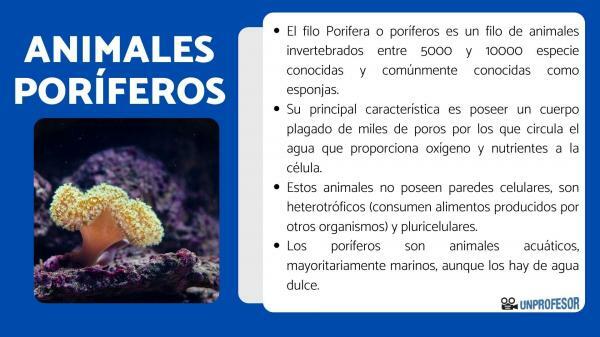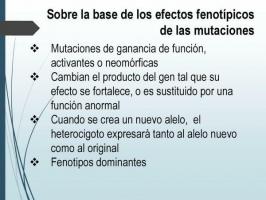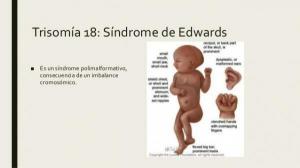3 types of PORIFERS with their names

One of the most amazing animal groups that exist at the bottom of the sea is that of sponges. Their sessile nature (inability to move) and their appearance makes many think that they are plants, but the truth is that they are very primitive animals, and that in the past they have been in daily use (although sponges are currently used artificial). In this lesson from a TEACHER we talk about types of porifers that exist. If you want to know more, keep reading!
The poriferous(Porifera) or sea sponges are a phylum of aquatic animals, mostly marine, sessile (unable to move) and lacking true tissues.
They are very primitive animals in which almost all its functions are carried out thanks to a complex aquifer system of pores, channels and chambers that produce streams of water that are generated by the movement of flagellate cells calls choanocytes.
Thanks to this system of pores and channels they achieve feeding on dissolved substances in water by filtration. Around 9,000 species of sponges are currently known worldwide, of which only about 150 live in fresh water.
Sponge species are known from the class Hexactinelida as early as the Ediacaran period in the Upper Precambrian. Sponges were considered plants due to their inability to move, until in 1765 it was observed that In its interior, streams of water were generated, at which point they were recognized as animals. In fact, they are so primitive animals that they were the first ways to branch down the evolutionary tree from the common ancestor of animals.

As we said, some 9000 species of sponges are known, which are grouped into three currently living species. Here we leave you the 3 types of porifers that currently exist.
Class Calcáreas (Calciesponjas)
They are called thus sponges with calcareous skeleton, that is, with calcium carbonate spicules. The spicules are straight and have three or four rays. These sponges tend to be small, 10 cm or less in height, and have a tubular or vessel shape. They may have an asconoid, syconoid, or leuconoid structure. Although many are muted in color, there are some bright yellow, red, green, or purple.
- Leucosolenia and Sycon They are shallow water marine forms commonly used in the laboratory.
- Leucosolenia it is a small asconoid sponge that grows giving rise to branched colonies.
- Clathrina it is a small tangle of tubes.
- Sycon it is a small solitary sponge that can live in isolation or in clusters by budding. The typical syconoid animal is vessel-shaped and 1–3 cm long, with a crown of straight spicules around the osculum that prevents small animals from entering.
Class Hexactinellids (hyalosponges) or vitreous sponges
Sponges of this class are almost alldeep sea s and they are only harvested by dredging. Most of them have radiated symmetries, with funnel-shaped bodies or vessels that are fixed to the substrate by a system of root spicules.
They reach sizes that go from 7.5 cm to 1.3 m long. Its distinctive feature is its skeleton made up of spicules siliceous with six rays, which are generally united to form a reticular structure with a vitreous appearance.
The structure of their tissues differs considerably from other species of sponges, which has led some scientists to classify them as a subphylum of porifers. The body of some Hexactinellids It is made up of a syncytium called the trabecular meshwork.
The reticular framework of many vitreous sponges is of great beauty, as is the case with Euplectella or Philippine watering can, a classic example of the Hexactinelid class.
Class Demosponjas
The last of the poriferous types is this class which comprises 95% of species currently known, some of the largest. The spicules are siliceous, but they do not have six rays, and they may be attached by the spongin protein or be absent altogether.
Bath sponges Spongia and Hippospongia They belong to this group and have spongy skeletons and completely lack siliceous spicules. All the sponges of this class are of leuconoid structure and all are marine, except for one family, that of the Spongylids, which are freshwater.
Marine demosponges are extremely variable in sizes and colors very striking. Some are encrusting, tall, and digitiform, others are low and spreading, some pierce shells, and others are fan, pot, pad, or spheroidal shapes. Some tropical sponges can reach several meters in diameter.
Freshwater sponges are widely distributed in lagoons and streams well oxygenated, where they become embedded in stems of plants and submerged pieces of wood. They may look like a piece of foam, be perforated, and be green or brownish in color. They are common genres Spongilla and Myenia. Freshwater species are very common in the summer, although they are more easily found in the fall.




